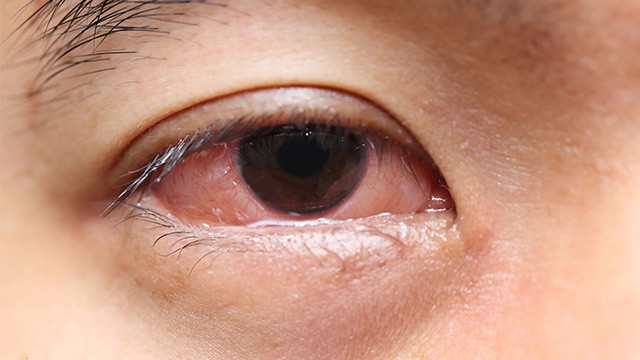Types of Eye Infections You should know
Regarding the types of eye infections, they often begin with symptoms such as discomfort, redness, and itchiness. In more severe cases, these infections can lead to vision loss. It is crucial to consult a healthcare provider to accurately diagnose the cause and to receive appropriate treatment.
Understanding Eye Infections
An eye infection occurs when the eye is invaded by microorganisms like bacteria, viruses, or fungi. The most common type of eye infection is conjunctivitis, also known as pink eye. Pink eye is typically caused by viruses, though bacteria can also be responsible. It’s important to note that antibiotics are effective against bacterial infections but do not work on viral infections.
Eye infections can affect one or both eyes and can vary in severity. While some infections are relatively harmless, others can be serious medical emergencies that risk causing vision loss. These infections can impact various parts of the eye, including the eyelid, conjunctiva, cornea, and other external areas.
Prevalence of Eye Infections
Eye infections are quite common. In the United States, approximately 1 million people seek medical attention for eye infections each year. A significant number of these cases occur in individuals who wear contact lenses.
Common Types of Eye Infections
- Blepharitis: Inflammation of the eyelids.
- Cellulitis: A bacterial infection of the skin around the eyes.
- Dacryocystitis: An infection of the tear sac, often due to blocked tear ducts.
- Conjunctivitis (Pink Eye): Inflammation or infection of the conjunctiva, usually caused by viruses or bacteria.
- Endophthalmitis: A severe infection of the interior of the eye.
- Stye: A painful, red bump on the edge of the eyelid caused by a bacterial infection of an oil gland.
- Uveitis: Inflammation of the uvea, the middle layer of the eye.
Symptoms and Causes of Eye Infections
Signs and Symptoms of an Eye Infection
An infected eye may present with various signs and symptoms, which can progress over time. Early indicators of an eye infection include:
- Red eyes: Inflammation causes redness in the white part of the eye.
- Itching or irritation: Persistent itching or a sensation of irritation in the eye.
- Eye pain: Discomfort or pain within the eye.
- Watery eyes: Excessive tearing.
- Swelling: Puffiness around the eye area.
As the infection progresses, additional symptoms may develop, such as:
- Discharge: Yellow, sticky pus that may ooze from the eye.
- Eyelashes sticking together: Discharge causing the eyelashes to clump and stick.
- Sensitivity to light (photophobia): Increased discomfort when exposed to light.
- Blurred vision: Difficulty seeing clearly.
- Fever: Elevated body temperature indicating a systemic infection.
Causes of Eye Infections
Eye infections can be caused by various microorganisms, including bacteria, fungi, parasites, and viruses. These organisms can enter the eye through multiple pathways, such as eye injuries or poor hygiene practices.
A common cause of eye infections is improper contact lens care. Sleeping in contact lenses or failing to clean them properly can introduce harmful microorganisms into the eye, leading to infection.
Bacteria Commonly Causing Eye Infections
Both gram-negative and gram-positive bacteria are responsible for eye infections. The distinction between these types of bacteria is based on their appearance in a Gram stain test, a laboratory procedure used to classify bacteria.
Gram-negative bacteria are not visible in a Gram stain test but can be detected through a bacterial culture test. Common gram-negative bacteria that cause eye infections include:
- Bacillus
- Enterobacteriaceae
- Haemophilus influenza
- Moraxella spp.
- Neisseria gonorrhoeae
- Pseudomonas aeruginosa (P. aeruginosa)
Gram-positive bacteria are visible in a Gram stain test. Common gram-positive bacteria causing eye infections include:
- Staphylococcus aureus (S. aureus)
- Streptococcus pneumoniae (S. pneumoniae)
Proper diagnosis and treatment of eye infections require identifying the specific type of microorganism involved. This allows healthcare providers to choose the most effective treatment plan, whether it involves antibiotics for bacterial infections or other medications for viral, fungal, or parasitic infections.
Viruses That Commonly Cause Eye Infections
Several viruses are known to cause eye infections, including:
- Herpes simplex type 1 (HSV-1): This virus typically causes cold sores but can also infect the eye, leading to keratitis.
- Varicella zoster virus (VZV): This virus causes chickenpox and shingles and can infect the eye, leading to conditions such as herpes zoster ophthalmicus.
- Adenovirus: A common cause of viral conjunctivitis, adenoviruses can spread easily and are highly contagious.
Fungi That Cause Eye Infections
Fungal eye infections, though less common, can be serious. Notable fungi include:
- Candida species: These fungi are responsible for about 66% of endophthalmitis cases following corneal transplant surgery. Candida infections can also occur after cataract surgery.
- Fusarium: This type of fungus can cause infection following an eye injury involving outdoor contaminants like sticks or plants. Fusarium can also enter the eye through a fungal bloodstream infection.
Diagnosis and Tests for Eye Infections
Diagnosing an eye infection involves several steps:
- Medical History and Symptom Discussion: A healthcare provider will review your medical history and ask about your symptoms.
- Eye Examination: A thorough examination of the eye will be conducted.
- Lab Testing: A swab of any discharge from the eye may be taken and sent to a lab for testing to identify the specific cause of the infection.
Management and Treatment of Eye Infections
Treatment varies depending on the type of infection:
- Bacterial Infections: Treated with anti-infective medications such as eye drops, ointments, or tablets. Antibacterial medications usually start working within 24 to 48 hours.
- Viral or Allergic Infections: Often need to run their course. Comfort can be improved with home remedies such as:
- Damp, warm, or cool compresses.
- Lubricating eye drops (artificial tears).
- Over-the-counter (OTC) pain relievers.
- Avoiding allergens.
Preventing Eye Infections
While it may not be possible to prevent all eye infections, certain practices can significantly reduce your risk:
- Proper Contact Lens Care: Follow instructions on usage, cleaning, and duration of wear.
- Protective Eyewear: Use during work or sports to prevent injury.
- Avoid Allergens: Steer clear of known allergens and use allergy medications as needed.
- Good Hygiene Practices: Regularly wash hands and avoid sharing items that touch your eyes, such as towels or makeup.
- Avoid Sick Individuals: Stay away from people who are ill to minimize exposure to contagious infections.
- Replace Cosmetics: Discard eye cosmetics if you develop an infection to prevent re-infection.
Outlook / Prognosis for Eye Infections
What to Expect with an Eye Infection
- Allergic Eye Infections: These are not contagious and do not pose a risk to your vision. You do not need to isolate yourself from others.
- Infectious Eye Infections: Caused by viruses, bacteria, or fungi, these can be spread to others. You should avoid close contact with people until you have started treatment.
- Serious Eye Infections: Infections resulting from eye injuries or those affecting the cornea can be dangerous to your vision. It’s crucial to consult an eye care specialist promptly for an accurate diagnosis and effective treatment.
Living With an Eye Infection
When to See a Healthcare Provider
- General Symptoms: If you experience discomfort, pain, discharge, or vision problems, it is advisable to see a healthcare provider, even if you suspect allergies.
- Eye Injuries: Immediate medical attention is required for eye injuries to prevent complications that could lead to vision loss. Eye doctors often provide on-call services for urgent cases, even after hours or on weekends.
Vulnerability of Eyes to Infections
Despite their protective mechanisms, eyes remain susceptible to infections from injuries and systemic diseases. Even familiar symptoms like redness or irritation warrant professional evaluation to ensure proper treatment and to prevent serious complications. This is particularly important for contact lens wearers, who need to be extra cautious about eye infections.
Preventive Measures and Care
- Contact Lens Hygiene: Always follow proper cleaning and usage guidelines for contact lenses.
- Protective Eyewear: Use during activities that pose a risk of eye injury.
- Hygiene and Precautions: Maintain good hand hygiene, avoid sharing personal items that come into contact with your eyes, and replace eye cosmetics regularly to prevent re-infection.

A graduate of Computer Science and Information Management Technology. Diploma – Caregiving, Certificates – Dementia and Diabetes Awareness and Management. A researcher, blogger, songwriter, singer and acoustic guitarist. Born in an environment where natural talents such as healing are imparted at our natural birth. This natural talents of healing is the result of our genetic inheritance and the training from family environment.














